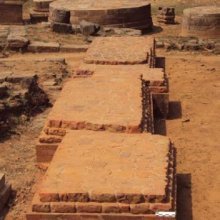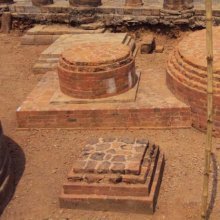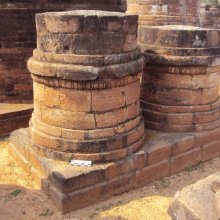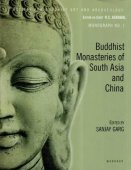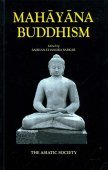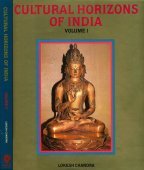Stupa, Shtupa, Stūpa: 23 definitions
Introduction:
Stupa means something in Buddhism, Pali, Hinduism, Sanskrit, the history of ancient India, Hindi. If you want to know the exact meaning, history, etymology or English translation of this term then check out the descriptions on this page. Add your comment or reference to a book if you want to contribute to this summary article.
Images (photo gallery)
(+365 more images available)
In Hinduism
Vastushastra (architecture)
Source: Knowledge Traditions & Practices of India: Architecture (1): Early and Classical ArchitectureStūpa (स्तूप, “relic mounds”) are a type of constructed temples dating back to the time of Buddha (6th century BCE). Originally the stūpas were made of bricks and surrounded by a wooden railing, then were enlarged and elaborated over centuries to magnificent complexes during the period of different empires and dynasties—Maurya empire, Śuṅga dynasty, Andhra period and Kuṣāṇ period.

Vastushastra (वास्तुशास्त्र, vāstuśāstra) refers to the ancient Indian science (shastra) of architecture (vastu), dealing with topics such architecture, sculpture, town-building, fort building and various other constructions. Vastu also deals with the philosophy of the architectural relation with the cosmic universe.
General definition (in Hinduism)
Source: archive.org: Vedic index of Names and Subjects1) Stupa (स्तुप) means ‘tuft of hair’ in the Vājasaneyi-saṃhitā and the Śatapatha-brāhmaṇa (i. 3, 3, 5; iii. 5, 3, 4). See Stukā.
2) Stūpa (स्तूप) in the Rigveda and later denotes the ‘top-knot’ of hair as designating the upper part of the head.
In Buddhism
Theravada (major branch of Buddhism)
Source: Access to Insight: A Glossary of Pali and Buddhist TermsOriginally, a tumulus or burial mound enshrining relics of a holy person - such as the Buddha - or objects associated with his life. Over the centuries this has developed into the tall, spired monuments familiar in temples in Thailand, Sri Lanka, and Burma; and into the pagodas of China, Korea, and Japan.Theravāda is a major branch of Buddhism having the the Pali canon (tipitaka) as their canonical literature, which includes the vinaya-pitaka (monastic rules), the sutta-pitaka (Buddhist sermons) and the abhidhamma-pitaka (philosophy and psychology).
Tibetan Buddhism (Vajrayana or tantric Buddhism)
Source: Google Books: The Crystal Mirror of Philosophical SystemsStupas (symbolizing the Buddha’s body) refers to one of the “Three Supports” which are known in Tibetan as rten gsum.—Accordingly, [while describing the history of philosophical systems in Mongolia], [regarding Godan and Kublai’s era]: Later on, during the reign of King Mongké (1209–59), Karma Pakshi and others arrived. [...] The king, having obtained from India many examples of the three supports [e.g., Stupas (symbolizing the Buddha’s body)], such as Buddha relics and so forth, had temples built, established monasteries, and so spread the teaching.
Source: archive.org: The Indian Buddhist IconographyStūpa (स्तूप) represents the “the embodiment of the Buddhist Universe”, according to Vajrayāna or Tibetan Buddhism.—Besides the sacred symbols connected with Buddha’s life and teachings, worship was offered by the Buddhists to numerous other objects. One of the most important among these objects is the Stūpa which is regarded as the embodiment of the Buddhist Universe with all the heavens as conceived in Buddhism. The stūpas received worship even in the life-time of the Buddha and continued throughout the centuries after his Māhaparinirvāṇa. Such stūpas are found in abundance in the Buddhist countries.
A few celebrated stūpas in Nepal are [...] the Stūpas of the Svayambhūnātha (vulgo-Śimbhu), the Bodhnāth and Kaṭhe Śimbhu. Besides the Stūpas, the Three Jewels of Buddhism, known by the names of the Buddha, Dharma and Saṅgha were conceived in the form of deities and worship was freely offered to them by the Buddhists in both symbolic and human forms. [...] Out of the three,one Dharma is a goddess.

Tibetan Buddhism includes schools such as Nyingma, Kadampa, Kagyu and Gelug. Their primary canon of literature is divided in two broad categories: The Kangyur, which consists of Buddha’s words, and the Tengyur, which includes commentaries from various sources. Esotericism and tantra techniques (vajrayāna) are collected indepently.
General definition (in Buddhism)
Source: Wisdom Library: BuddhismStupa:—A container that holds the ashes of some highly realized being.
Source: Buddhist Door: GlossarySanskrit word means burial mound, which contains the ashes or relics of an enlightened being. In China, it appears as pagoda, representing the place where Buddha "lives".Source: WikiPedia: BuddhismA stupa (stupa, literally meaning "heap") is a mound like structure containing Buddhist relics, once thought to be places of Buddhist worship, typically the remains of a Buddha or saint. In other Asian languages such monuments are called.
- chorten (Tibetan, "dharma place/seat")
- chedi (Thai, from the Pali chaitya)
- dagobah (Sinhalese, from the Sanskrit dhatu)
- tope (Hindi, from the Sanskrit)
- garbha (Sanskrit, meaning a storehouse or repository)
After "stupa", "chorten" is the most commonly encountered English term. The term "reliquary" is sometimes used, after a Roman Catholic functional equivalent.
Source: Shambala Publications: GeneralStūpa Skt. (Pali, thūpa; Sinh., dagoba; Tib., chöten), lit., “hair knot”; characteristic expression of Buddhist architecture, one of the main symbols of Buddhism and a focal point in temples and monasteries.
Originally stūpas were memorial monuments over the mortal remains of the historical Buddha and other saints. They also served, however, as symbolic reminders of various decisive events in the life of Shākyamuni Buddha. Thus stūpas were built at Lumbinī, Bodh-gayā, Kushinagara, Sārnāth, and so on. At the latest by the time of King Ashoka (3d century BCE) the veneration of saints had become a general custom; the stūpas from his time are still preserved.
Not every stūpa contains relics in the proper sense; in their place sacred texts and representations are also enshrined, which confer their sacredness on the stūpa. Stūpas are often purely symbolic structures; examples are Borobudur and the three-dimensional mandalas of Tibet.
The veneration of stūpas, in which the Buddha is “present,” has been known since the early period of Buddhism. Such veneration is usually expressed by circumambulating the stūpa in the direction of the sun’s course but also through other forms of worship (pūjā). It is not, however, the relics themselves that are venerated; rather the stūpa serves as a support for meditation and as a symbolic reminder of the awakened state of mind.
India history and geography
Source: Wikipedia: India HistoryStupa, also called dagoba and cetiya, is considered an outstanding type of architectural creation of ancient Sri Lanka. Under the influence of Buddhism, there were several changes in the field of architecture in Sri Lanka. The stupa commands a prominent place among these changes. The Stupa is also known by synonymous names such as chaithya, dagaba, thupa, seya and vehera. Stupas designed and constructed in Sri Lanka are the largest brick structures known to the pre-modern world.
Source: Cologne Digital Sanskrit Dictionaries: Indian Epigraphical GlossaryStūpa.—(CII 3; BL; LL), technical name of a type of Buddhist monument; a Buddhist structure enshrining relics. Sometimes the term ratna-gṛha (i. e. the house enshrining the three ratnas or the best amongst the three) seems to be used to denote a stūpa. (EI 2), a Jain religious establishment. (SITI), pinnacle of a temple. Note: stūpa is defined in the “Indian epigraphical glossary” as it can be found on ancient inscriptions commonly written in Sanskrit, Prakrit or Dravidian languages.

The history of India traces the identification of countries, villages, towns and other regions of India, as well as mythology, zoology, royal dynasties, rulers, tribes, local festivities and traditions and regional languages. Ancient India enjoyed religious freedom and encourages the path of Dharma, a concept common to Buddhism, Hinduism, and Jainism.
Languages of India and abroad
Sanskrit dictionary
Source: DDSA: The practical Sanskrit-English dictionaryStūpa (स्तूप).—
1) A heap, pile, mound (of earth &c.); बटुभिरुपहृतानां बर्हिषां स्तूपमेतत् (baṭubhirupahṛtānāṃ barhiṣāṃ stūpametat) Mu.3.15.
2) A Buddhistic monument, or kind of Tope erected for keeping sacred relics, as those of Buddha.
3) A funeral pile.
4) Strength, power.
Derivable forms: stūpaḥ (स्तूपः).
Source: Cologne Digital Sanskrit Dictionaries: Edgerton Buddhist Hybrid Sanskrit DictionaryStūpa (स्तूप).—m. (1) (rarely nt.; = Pali thūpa, AMg. thūbha, rarely thūva; Sanskrit Lex., in lit. only Buddh. and Jain), relic-mound, tope: Mahāvyutpatti 6999; Saddharmapuṇḍarīka 239.1 ff.; Mahāvastu ii.287.3; 363.16; Avadāna-śataka i.119.7; °pa-bimbāni Kāraṇḍavvūha 13.11; 36.19; °pa- bhedanam Mahāvyutpatti 2334, one of the upānantarīya, q.v.; °pa-bhedaka Kāraṇḍavvūha 94.23; common everywhere; as nt., stūpaṃ kāritaṃ (n. sg.) Mahāvastu i.61.1; (2) (Pali, see next but one) turret or pinnacle of a building, in prākārapari- khādvāra-stūpābhinigūḍhaḥ Avadāna-śataka ii.115.8, see Speyer's note.
Source: Cologne Digital Sanskrit Dictionaries: Shabda-Sagara Sanskrit-English DictionaryStūpa (स्तूप).—m.
(-paḥ) 1. A heap, a pile of earth, &c. 2. A funeral pile. 3. A Bud'dhistic construction for keeping holy relics. E. ṣṭūp to heap, aff. ac; or ṣṭu to praise, pak Unadi aff., and the vowel made long.
Source: Cologne Digital Sanskrit Dictionaries: Benfey Sanskrit-English DictionaryStūpa (स्तूप).—m. 1. A heap, a pile, a Bauddha construction for keeping holy relics. 2. A funeral pile.
Source: Cologne Digital Sanskrit Dictionaries: Cappeller Sanskrit-English DictionaryStupa (स्तुप).—[masculine] tuft of hair, top-knot.
--- OR ---
Stūpa (स्तूप).—[masculine] top, [especially] of the head, tuft of hair; heap or pile of earth, a Buddhist tomb.
Source: Cologne Digital Sanskrit Dictionaries: Monier-Williams Sanskrit-English Dictionary1) Stupa (स्तुप):—[from stu] m. (cf. stūpa) a knot or tuft of hair etc. (See stukā), [Vājasaneyi-saṃhitā; Śatapatha-brāhmaṇa]
2) Stūpa (स्तूप):—[from stu] a etc. See p. 1260, col. 1.
3) [from stūp] b m. ([according to] to [Sāyaṇa] [from] √styai [according to] to [Uṇādi-sūtra] [from] √3. stu; [probably] connected with stupa, under √3. stu) a knot or tuft of hair, the upper part of the head, crest, top, summit (cf. [Greek] στύπος), [Ṛg-veda; Taittirīya-saṃhitā]
4) [v.s. ...] [Pañcaviṃśa-brāhmaṇa]
5) [v.s. ...] a heap or pile of earth or bricks etc., ([especially]) a Buddhist monument, dagoba (generally of a pyramidal or dome-like form and erected over sacred relics of the great Buddha or on spots consecrated as the scenes of his acts), [Monier-Williams’ Buddhism 504]
6) [v.s. ...] any relic-shrine or relic-casket (made of various materials, such as terra cotta, clay, elaborately formed brick or carved stone; often very small and portable, and enclosing a fragment of bone or a hair etc. of some saint or deceased relative, or inscribed with a sacred formula; these are carried long distances and deposited in hallowed spots such as Buddha-Gayā), [Monier-Williams’ Buddhism 397, 504]
7) [v.s. ...] any heap, pile, mound, tope, [Hemādri’s Caturvarga-cintāmaṇi]
8) [v.s. ...] the main beam (of a house), [Āpastamba-gṛhya-sūtra]
9) [v.s. ...] ([cf. Lexicographers, esp. such as amarasiṃha, halāyudha, hemacandra, etc..also], ‘wind; fight; = kūla; = bala; = niṣprayojana’).
Source: Cologne Digital Sanskrit Dictionaries: Yates Sanskrit-English Dictionary1) Ṣṭūpa (ष्टूप):—(ka) stūpayati 10. a. To heap together.
2) Stūpa (स्तूप):—(paḥ) 1. m. A heap, a pile of earth.
Source: DDSA: Paia-sadda-mahannavo; a comprehensive Prakrit Hindi dictionary (S)Stūpa (स्तूप) in the Sanskrit language is related to the Prakrit word: Thūbha.
[Sanskrit to German]
Sanskrit, also spelled संस्कृतम् (saṃskṛtam), is an ancient language of India commonly seen as the grandmother of the Indo-European language family (even English!). Closely allied with Prakrit and Pali, Sanskrit is more exhaustive in both grammar and terms and has the most extensive collection of literature in the world, greatly surpassing its sister-languages Greek and Latin.
Hindi dictionary
Source: DDSA: A practical Hindi-English dictionaryStūpa (स्तूप) [Also spelled stup]:—(nm) a (Buddhistic) monument (generally of a pyramidal or dome-like form and erected over the sacred relics of the Buddha or on spots consecrated as the scenes of his acts).
...
Kannada-English dictionary
Source: Alar: Kannada-English corpusStūpa (ಸ್ತೂಪ):—
1) [noun] a mound; a hillock.
2) [noun] a pile of wood on which a dead body is burned; pyre.
3) [noun] the state or quality of being strong; strength.
4) [noun] a heap of things; a pile.
5) [noun] the forehead of a horse.
6) [noun] a dome-shaped Buddhist shrine.
7) [noun] (budh.) a tomb in the form of a mound raised where a dead body is burried.
8) [noun] a shrine where the relics of a Buddhist monk are preserved.
Kannada is a Dravidian language (as opposed to the Indo-European language family) mainly spoken in the southwestern region of India.
Nepali dictionary
Source: unoes: Nepali-English DictionaryStūpa (स्तूप):—n. a Buddhistic monument; a tope (or stupa) erected for keeping sacred relics;
Nepali is the primary language of the Nepalese people counting almost 20 million native speakers. The country of Nepal is situated in the Himalaya mountain range to the north of India.
See also (Relevant definitions)
Starts with: Stupabhedaka, Stupabhedana, Stupabimba, Stupak, Stupaka, Stupam, Stupamandala, Stupaprasada, Stupaprishtha, Stupashriya, Stupavihara.
Query error!
Full-text (+257): Arushastupa, Dronastupa, Nivartanastupa, Mahastupa, Hiranyastupa, Dharmarajika, Pilusarastupa, Stupaprishtha, Stupam, Stupamandala, Dhatustupa, Staupika, Samstupa, Hairanyastupa, Dharmasharira, Buddhadravya, Harmika, Baluka-stupa, Caitya, Stup.
Relevant text
Search found 123 books and stories containing Stupa, Shtupa, Stūpa, Ṣṭūpa, Stupas, Stupat; (plurals include: Stupas, Shtupas, Stūpas, Ṣṭūpas, Stupases, Stupats). You can also click to the full overview containing English textual excerpts. Below are direct links for the most relevant articles:
Rig Veda (translation and commentary) (by H. H. Wilson)
Vastu-shastra (Introduction to Indian architecture) (by D. N. Shukla)
Stūpas (Shrines for Devotion) < [Chapter 12 - History of Hindu Temples (Prāsādas and Vimānas)]
Temple architecture in Burma < [Chapter 12 - History of Hindu Temples (Prāsādas and Vimānas)]
(vi) Rise of Art < [Chapter 4 - An outline History of Hindu Architecture]
Amaravati Art in the Context of Andhra Archaeology (by Sreyashi Ray chowdhuri)
Lower Kṛṣṇā Valley (3): Jaggayyapeṭa < [Chapter 2 - Amarāvatī and other Archaeological Sites of Ancient Andhra Pradesh]
The early phase of Amarāvatī art (2nd-1st century BCE) < [Chapter 5 - Impact of Amarāvatī Art]
Lower Kṛṣṇā Valley (4): Ghaṇṭaśālā < [Chapter 2 - Amarāvatī and other Archaeological Sites of Ancient Andhra Pradesh]
Buddhist Sutra literature (study) (by Gopika G)
Part 1.3 - Stūpa worship mentioned in Saddharmapuṇḍarīka Sūtra < [Chapter 4 - Buddhist culture of worship in Saddharmapuṇḍarīka Sūtra]
Part 1.2 - Types of Stūpas < [Chapter 4 - Buddhist culture of worship in Saddharmapuṇḍarīka Sūtra]
Sri Lanka at the Crossroads of History (by Zoltán Biedermann)
Patronage and ancient Sri Lanka < [Chapter 1 - Archaeology and cosmopolitanism in Sri Lanka]
The Theravada cosmopolis in the 11th–13th centuries < [Chapter 3 - Sri Lanka and the Theravada Buddhist ecumene]
Pilgrimage and ancient Sri Lanka < [Chapter 1 - Archaeology and cosmopolitanism in Sri Lanka]
Stupas in Orissa (Study) (by Meenakshi Chauley)
Stupas at the Upper Indus Valley region < [Chapter 3]
Symbolism of the Stupa < [Chapter 3]
Related products
.jpg)


